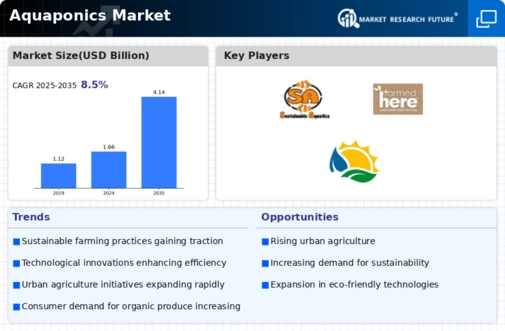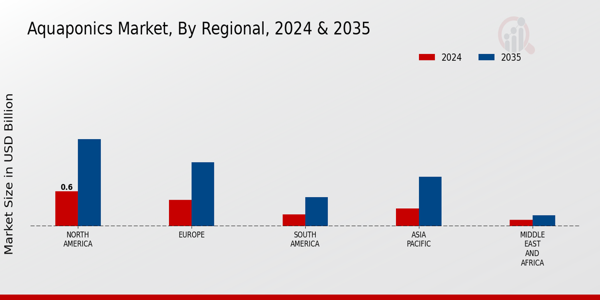Environmental Awareness
Growing environmental awareness among consumers and policymakers is a significant driver of the Global Aquaponics Market Industry. As concerns about climate change and resource depletion escalate, there is a collective push towards sustainable agricultural practices. Aquaponics, which minimizes waste and maximizes resource efficiency, aligns with these environmental goals. The method's ability to produce food with a lower carbon footprint compared to conventional farming methods resonates with eco-conscious consumers. This shift in consumer behavior is likely to encourage more investments in aquaponics, further expanding the market and fostering a culture of sustainability in food production.
Urban Agriculture Trends
The rise of urban agriculture significantly influences the Global Aquaponics Market Industry. As cities expand and arable land diminishes, urban aquaponics presents a viable solution for local food production. This trend is particularly evident in metropolitan areas where consumers increasingly seek fresh, locally sourced produce. Urban aquaponics systems can be implemented in limited spaces, such as rooftops and vacant lots, making them adaptable to various urban environments. The convenience of having fresh fish and vegetables available within city limits aligns with consumer preferences for sustainability and food security, thereby propelling the growth of the aquaponics market.
Market Growth Projections
Technological Advancements
Technological advancements play a pivotal role in the evolution of the Global Aquaponics Market Industry. Innovations in sensor technology, automation, and data analytics enhance the efficiency and productivity of aquaponic systems. For instance, the integration of IoT devices allows for real-time monitoring of water quality and nutrient levels, optimizing growth conditions for both fish and plants. These technologies not only improve yields but also reduce operational costs, making aquaponics more accessible to a broader range of producers. As these technologies continue to develop, they are likely to attract investment and drive market growth, contributing to the projected increase in market size.
Sustainable Food Production
The Global Aquaponics Market Industry is increasingly recognized for its potential to provide sustainable food production solutions. With the growing global population, projected to reach 9.7 billion by 2050, the demand for efficient agricultural practices intensifies. Aquaponics combines aquaculture and hydroponics, allowing for the cultivation of fish and plants in a symbiotic environment. This method utilizes up to 90 percent less water than traditional farming, making it an attractive option for regions facing water scarcity. As a result, the market is expected to grow from 1.66 USD Billion in 2024 to 4.14 USD Billion by 2035, reflecting a compound annual growth rate of 8.66 percent from 2025 to 2035.
Government Support and Initiatives
Government support and initiatives are crucial in shaping the Global Aquaponics Market Industry. Many governments recognize the potential of aquaponics to enhance food security and promote sustainable agriculture. Various programs and funding opportunities are being established to encourage research and development in aquaponics technology. For example, grants and subsidies are being offered to farmers and entrepreneurs who adopt aquaponic systems. Such initiatives not only facilitate the growth of the aquaponics market but also contribute to the overall advancement of agricultural practices, ensuring that aquaponics becomes a mainstream method of food production.














